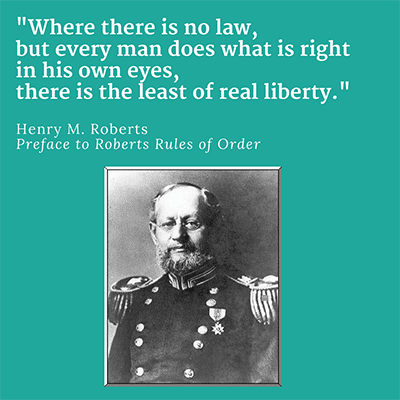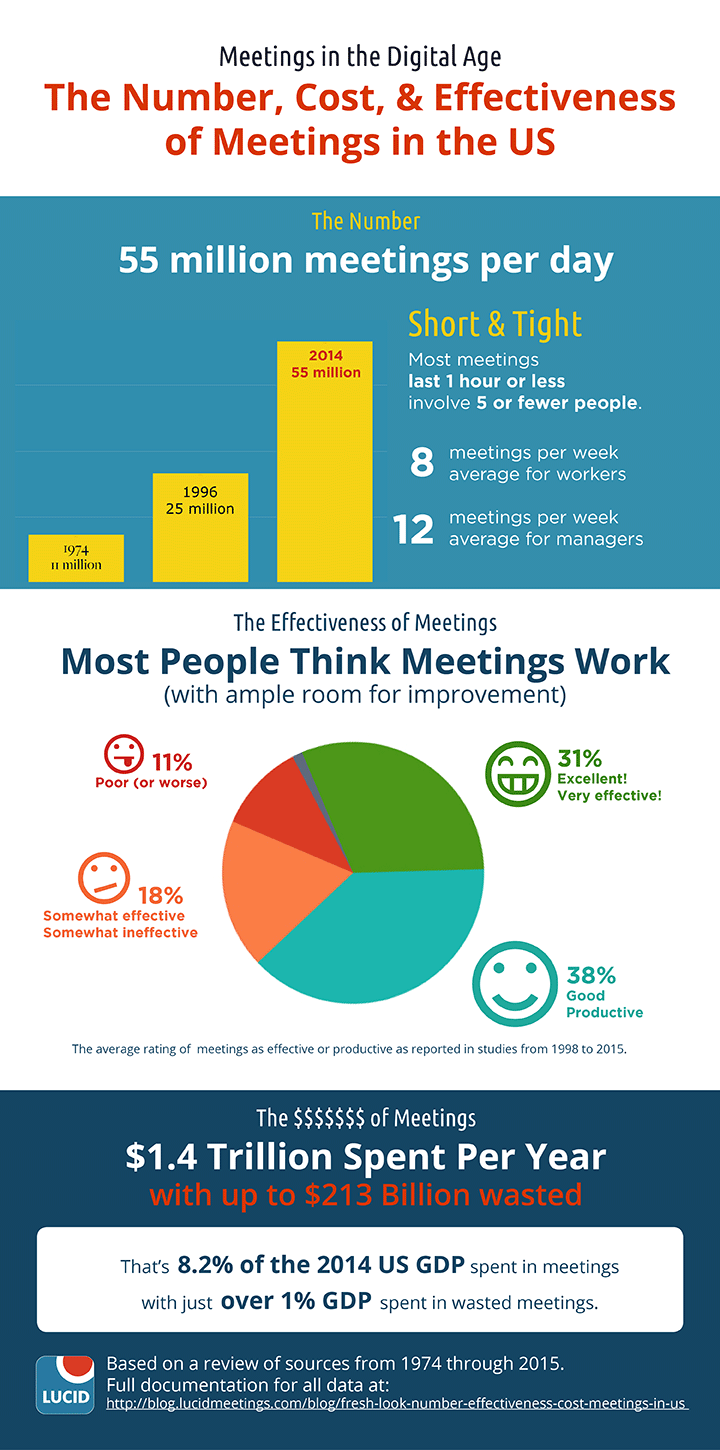Leading Successful All-Hands Meetings: Avoid Common Mistakes and Advance Your Mission
Most organizations host regular meetings involving everyone on their teams.
These meetings go by many names: all-hands, all-staff, all teams, town halls, business update meetings, Teatime, TGIF, and more. This form of meeting, where you gather everyone in your tribe at the same time, is thousands of years old and practiced by every kind of group. Unfortunately, none of these names provide much guidance about how to make these meetings worthwhile.
Like every meeting, the key to a great all-hands meeting is to clearly define the purpose and intended outcomes in advance. Why do you host these meetings? What should be different afterward as a result?
“All Hands” just describes the attendee list.
I’ve been asked how to improve all-hands meetings by several clients over the years. In this article, I’ve pulled together all those separate bits of advice in one place.
Read on to learn:
- Six Common All-Hands Meeting Mistakes and What to Do Instead
- Four Ways to Run All-Hands Meetings That Work
- Why Connection to Mission is Your All-Hand’s Most Important Job
- And More: Frequent Questions, Resources, and Examples
Six Common All-Hands Meeting Mistakes and What to Do Instead
A True Story About What Not To Do
A local consulting company recently gained a new CEO. He has a reputation for turning around troubled businesses, and this company certainly qualifies. Despite a strong customer base and healthy revenue, employee turnover is skyrocketing. The company culture is full of inter-team squabbles, mistrust, and dysfunction.
As part of his efforts to turn things around, the new CEO scheduled a series of all-hands meetings. He planned to use these meetings to share more about the changes being made and answer employee questions. He promised a new commitment to leadership transparency.
The first meeting went as well as could be expected. Held as a webinar, it wasn’t possible to see if anyone was really listening, but the number of people shown as “attending” looked high. When the call for questions came in the last 5 minutes, the CEO fielded a couple of softballs for which he’d clearly prepared answers in advance. It looked a bit like a setup, but whatever – it was a start.
In the second meeting, he was asked what the plan was for returning to the office. Several employees had childcare to arrange. Others were working from new locations far from the office. The answer to this question has a significant impact on their personal lives, and they want to know what to expect.
The CEO wasn’t expecting this question, though, and didn’t have an answer. So – he avoided it. “That’s still under discussion,” he said, then moved on. He didn’t share anything about the options under consideration, who was involved in making these decisions, or when employees could expect an update. He didn’t ask for their input. Instead, he avoided the question and treated it as if it was unimportant.
The result? Employee confidence in their new leader plummeted. “He obviously doesn’t know anything, and he’s fumbling,” one reported.
“So much for transparency. Are you hiring?” asked another.
What’s the purpose of an all-hands meeting?
Most organizations run these meetings to:
- Ensure everyone has up-to-date information
- Encourage a sense of inclusion and belonging
- Reinforce their collective identity, vision, mission, and values
- Improve cross-functional alignment
These are important goals, but also terribly vague. Without additional clarity, companies that use their all-hands to “make sure everyone is up-to-date” run meetings that feel like scattershot webinars. Leaders share what feels like a random set of announcements, cherry-picked business numbers, and maybe a rah-rah message or two. Then, they offer a few minutes to answer questions, replying to the easy ones and ignoring the rest.
That approach leaves everyone frustrated. Leaders feel like they tried, but their message didn’t get through. The effort seems futile and frustrating. Employees feel disengaged and disrespected. Over time, this leads to antipathy and contempt on both sides, emotions that research shows to be the death knell for relationships.
The risk of unintended negative consequences increases dramatically when leaders make one or more of these common mistakes.
Want expert guidance for making your meetings better? Work with us.
Mistake 1. Mandatory Attendance
Obviously, we want all hands present for an all-hands meeting, but that doesn’t make it a good idea to force people to attend.
Making attendance mandatory is a bad idea for several reasons.
- Team members in the middle of critical projects, working directly with clients, or on leave can’t attend. This makes it impossible to enforce this “rule” equally.
- Lack of choice undermines inclusivity. No one likes to be forced to do anything, so by mandating attendance, you’re reinforcing the existing power structures and de-legitimizing team member’s ability to make sound decisions.
What to do instead:
- Invite and encourage everyone to attend.
Express your sincere hope that they join the call, and find ways to make that easier for as many people as possible. For example, consider closing your office during all-hands meetings so front-line employees can attend. - Provide a compelling reason to attend.
What can team members learn in this meeting that they couldn’t learn any other way? What’s in it for them? Will it be fun? Exciting? Is there an opportunity for them to influence strategy? Will they get answers to the big open questions? Will there be snacks? - Record your meeting so those who couldn’t attend can see what they missed.
Mistake 2. No Interaction
If you run your all-hands like an old-school webinar, with leaders sharing a series of PowerPoints, just stop it. That approach no longer works for trained speakers, and it never worked for all-hands meetings.
What to do instead:
- Provide multiple ways to interact.
Some companies provide note-taking resources, invite feedback through interactive polls, and create moments for small group discussions. There’s a universe full of wonderful interactive workshop techniques that can add life to an all-hands. Bring in your company’s facilitators to help with this one. - Create new shared rituals.
For example, companies use all-hands to formally welcome new team members, recognize people who’ve done well, host debates on current issues, and more. - Dedicate lots of time for questions and answers.
These meetings provide the best opportunity for everyone to hear the same message at the same time.
Mistake 3. Bungled Q&A
Time for Q&A is a significant contributor to successful all-hands, but when handled poorly, this can create bigger problems. When leaders avoid questions or provide incomplete answers, they increase distrust. Employees wonder “What are they hiding? Do they know what they’re doing? What are they afraid to say, and how is this going to impact me?”
Instead, here’s how to make sure this Q&A time proves valuable for everyone:
- Take the hard questions.
Avoiding them doesn’t make them go away. It just leaves everyone guessing what those answers might be on their own. Your honest answer won’t be worse than the awful stuff some people imagine. - Answer all questions honestly.
This might mean you have to say things like:- “I don’t know the answer to that right now, but I can share what we’re considering and how you can help make those decisions..”
- “That’s hard to say. Honestly, we don’t yet know all the details, but here’s what we do know and what we’re doing to figure this out.”
- “That’s an interesting question. I want to make sure I’m giving you the most accurate answer I can. Can you share more about the thinking behind this question?”
- “I’m sorry, but I can’t share that information right now. Here’s what I can tell you, and when I expect to be able to share more.”
- Crowdsource questions in advance.
You want to address the hot questions that are on many people’s minds, not just those asked by the loudest person in the room. To find out what those are, ask people to submit their questions in advance and provide a way for employees to “upvote” the questions they want to have answered. - Carefully consider your approach to anonymity.
The typical advice is to provide a way for employees to post questions anonymously. This supposedly makes it safe to ask hard questions without fear of embarrassment or retribution. That may be the right call if you have a lot of employees and your company culture is low on trust, candor, and psychological safety. That said, anonymity can also provide cover for some pretty nasty behavior, unleashing the hidden trolls lurking in your workforce. Many companies are now moving away from anonymity as a result and seeking instead to create a culture of open feedback. Whatever you choose, be mindful of the values you’re working to demonstrate and watch to make sure your approach works well in practice.
Mistake 4. Unclear rules regarding privacy
When you provide honest answers to questions about your company’s financials, business strategy, and more, you create a risk that this information will be leaked to outsiders. At Google, Sundar Pichai canceled their weekly all-hands due to leaks like these, and other companies have struggled with negative press due to leaked information too.
While you can’t prevent this risk entirely, you can reduce the likelihood by making your information-sharing policies clear.
- Make it clear when sharing company confidential information.
You want there to be no doubt which details need to remain private to the company. - Ensure your employee policies cover breaches of confidentiality, train people on why this matters, and enforce the policies consistently.
Make sure everyone knows the consequences of sharing private information with external parties. This prevents leaks by people who didn’t understand the potential for harm to the company, or who didn’t think that the rules applied to their situation. - Don’t be evil.
Employees at Google felt they needed to share internal decisions with the press because these decisions violated their moral code. They believed they were acting as whistleblowers. This is an entirely different issue than the proverbial “loose lips sinking ships.”
To confirm your commitment to doing the right thing, establish a reporting policy that protects those who voice their concerns.
Mistake 5. Not following up
Big announcements, sweeping visions, stirring calls to action, and then… go back to your desk and act like nothing changed. Because without follow up, nothing will.
Hearing a thing and talking about a thing is very very different from understanding and acting on a thing.
The big ideas shared in all-hands meetings will be new to many team members. They’ll need to explore these ideas a few more times before they stick. They’ll also need to translate the big idea to the specific daily tasks on their list. Then, because it will be new, they’ll need to learn and refine their implementation of these ideas. That requires a feedback loop.
To ensure the ideas shared in your all-hands meeting show up in your company’s daily practice, plan to follow up by:
- Discussing ideas in team meetings.
Team leaders should plan to talk about what was shared in the all-hands and how this applies to the team’s work. - Invite asynchronous questions and feedback.
Provide a way for everyone to ask questions and discuss the all-hands content outside of meetings, with online forms, documents, or suggestions boxes. - Provide opportunities to go deeper.
Introducing a new practice or skill? Provide access to books and training. Taking on a new initiative? Share notes from the program kickoff and post progress updates. Raising a new question or opportunity? Schedule open discussions for those interested in taking the next step. - Embrace spaced repetition.
We often have to encounter an idea several times and several ways before we fully understand and remember it. Plan to share your big ideas in the all-hands and then repeat them across your internal communication channels several times over the course of many months.
Mistake 6. Failure to evolve
Ever hear the saying “what got you here won’t get you there”? That’s especially true for the all-hands meetings.
The way you run your all-hands should evolve over time.
When teams are small and new, all-hands meetings involve a lot of wayfinding. They work to answer questions like: who are we, what are we doing, why are we doing this, is it working, who’s new, and how has it all changed today? Larger companies focus on big strategic themes, performance on goals, and competitive market dynamics. The big companies also work to put on a show, with guest speakers and high-production value.
What you talk about in your all-hands should evolve.
Last year, companies were talking about how to operate within the constraints of a government-mandated shutdown. Then, many companies turned their focus to improving diversity, equity and inclusion. In summer 2021, the hot topics are employee retention and returning to the office.
As the nature of your work and the big topics of the day change, so should your all-hands meeting.
Adaptable companies will:
- Create a regular way of running all-hands meetings that leaves space for hot topics.
You know something will come up, so you better make sure you have time to deal with it. - Collect regular feedback.
Ask employees if they find your all-hands meetings valuable, and for their ideas about what would make them more useful. - Redesign your meeting at least once per year.
Take a look at what you’re doing and consider: is this meeting still serving an important function in our business? Or is there a more important need that we should be addressing with our time together? - Involve more people.
More minds = more ideas = more opportunities to freshen up your next all-hands.
Need specific ideas about how to design those all-hands meetings? Check these out.
4 Ways to Run All-Hands Meetings That Work

Like I said above, all-hands isn’t a type of meeting. That’s just the invitation list. We’ve seen companies successfully run four very different types of meetings under this same name.
These are all valid approaches. You can also mix and match your approach as your needs change.
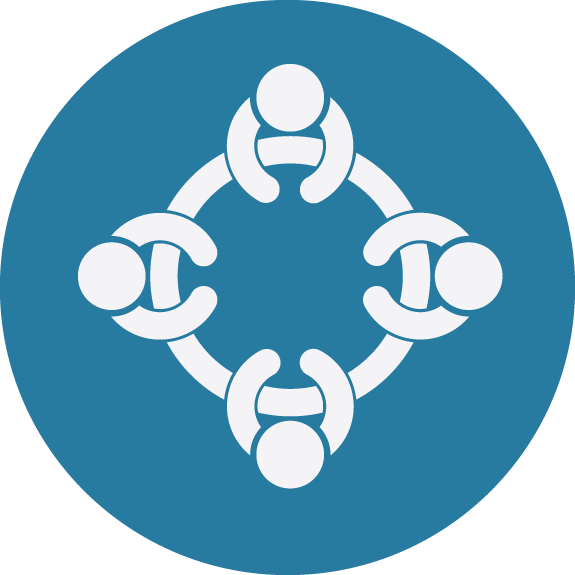 Option 1. The All-Hands Cadence Meeting
Option 1. The All-Hands Cadence Meeting
Best for:
- Smaller/flatter organizations, teams, or divisions within larger organizations
- Complicated (but not complex) work environments
- Tactical updates, i.e., blocking and tackling
How it Works
Smaller organizations get everyone together every week. The agenda typically looks something like this:
- Quick Announcements
- Scorecard Review: share progress on measurable goals
- Priority topics: 10-20 minutes on specific topics
- Wrap up: confirm decisions & action items
For example, this short video shows how companies operating using Great Game of Business principles get their whole team involved in their Huddles.
Want another example? Check out this marvelous little video of what Google’s weekly TGIF all-hands were like when they were small. This is not the meeting Sundar Pichai canceled.
 Option 2. Broadcast
Option 2. Broadcast
Best for:
- Larger organizations
- Diversified work environments (multiple teams, product lines, diversified missions)
- Strategic alignment
- Feeling like you’re “part of something bigger”
How it Works
Typically held monthly, these meetings share company news with everyone in the organization. Some groups run these as if they were internal press briefings or analyst calls. Some are very flashy. Most are like watching an interview with the CEO or other leader.
Because a broadcast-style all-hands is literally broadcast, team members can watch it from anywhere with anyone. Case in point: check out this account by an employee from Cisco: How Chuck Robbins’ All-Hands Influenced My 10-year-old
The companies with the strongest cultural cohesion pair their broadcasts with some all-staff engagement. This could be small group discussions immediately following the presentation. It could be a well-designed Q&A session. It could be that every leader plans to spend 15 minutes in their next team meeting discussing the All-Hands.
For example, Twitter took on the question of when/how/if they should deal with Donald Trump’s account in their all-hands meetings, which they call TeaTime.
Finally, check out how SoundCloud paired their whole company all-hands (Broadcast) with department/division town halls (Cadence) and informal topic-based Open Houses (Community of Practice) meetings.
 Option 3. Community of Practice
Option 3. Community of Practice
Best for:
- Mid to large teams
- Stable work environments
- Creating deep cultural ties and cohesive values
How it Works
Some companies host an all-hands learning moment every month. These begin with a short presentation on values or mission-aligned topics (10 minutes or less). Then, employees discuss the topic in small, cross-functional groups.
For example, your group might have a 10-minute talk about Sustainable Development, Constructive Feedback, Remote Working Agreements, or something similarly relevant to every team. Then after the presentation, you put up a slide with 3 discussion prompts and invite small groups to dig into the topic. Finally, end with 15 minutes to report out.
Frédéric Laloux wrote about the particularly lovely way that teams at Heiligenfeld use these meetings to build inter-group connections and advance their skills in Reinventing Organizations. (Scroll down to the section on “Concrete Cases” to read more.)
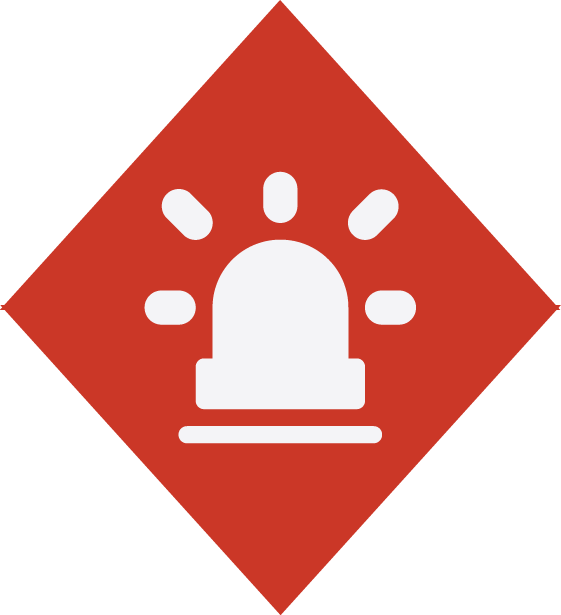
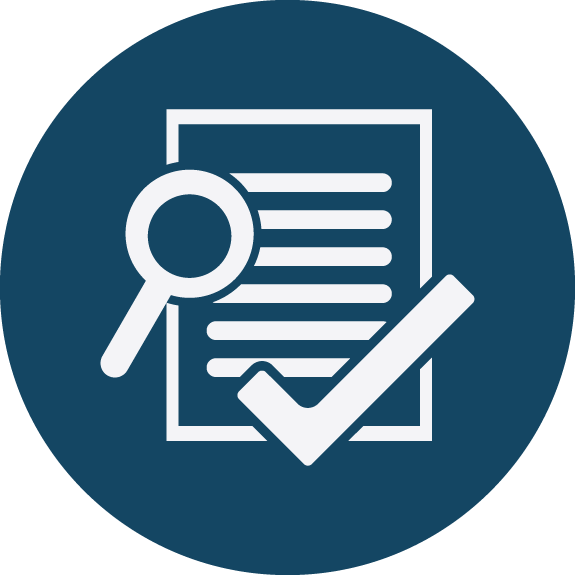 Option 4. Problem Solving then Action Review
Option 4. Problem Solving then Action Review
Best for:
- Driving rapid improvement and learning
- Creating a strong “in-it-together” environment
How it Works
Bold companies facing massive change have held all-hands meetings specifically to “outlearn” the competition. Every other meeting, the entire group comes together to solve one big problem holding the organization back. They dig into the problem, come up with options, then pick one.
In the following meeting, they regroup to review what happened and adjust their plans.
Next time, they tackle a different big problem.
This approach was used by Stefan Larsson at Old Navy to resurrect the brand after a major downturn. It required a lot of vulnerability on the part of the senior leadership team. It also worked really well.
Why Connection to Mission is Your All-Hands Most Important Goal
Each of these approaches gets the whole company focused on the same message at the same time. These meetings say “We’re a team. We’re doing this together.”
This feeling of being a part of something bigger and doing work that matters — this connection to the company’s larger mission — is the all-hand’s most important function. The details will change from month to month; that deeper sense of togetherness and purpose should not.
I strongly believe that connection to mission should be the North Star guiding the design of every all-hands meeting. Here are some questions I’ve been asked about this belief.
What does it mean to connect to mission?
Topics that connect your team to the larger mission help them answer these questions with a resounding “Strongly Agree!”
- I am really enthusiastic about the mission of my company.
- I have great confidence in my company’s future.*
In other words, these meetings should connect everyone involved to the larger purpose, so they can be excited about being a part of something bigger than themselves. You can’t take this for granted. Surveys have shown that only 41 percent of employees even know their company’s mission! You can’t repeat the core message about your company’s mission and values–what you’re there to do and what you stand for–too often.
Another way to think about this: when your team members go home and brag about their workplace, what stories are they telling?
Those are the kind of stories you want to share in All Hands.
Topics for all-hands that deepen everyone’s understanding of your mission and vision include:
- The influence of your mission on company decisions, and how staying true to your mission impacts your plans
- Recognition for employees who provide exceptional demonstrations of your values and take personal steps to advance the mission
- Progress on measurable mission-critical goals
- Larger Context: the history of your organization, why your mission and values are what they are, your place in global events, other organizations that provide examples you can learn from, new science, …
* These questions were listed as two of the eight questions you can use to determine employee engagement by ADP research recounted in Nine Lies About Work by Marcus Buckingham and Ashley Goodall. Check out how Cisco, where Mr. Goodall works, uses these questions in regular engagement “pulse” conversations.
More FAQs About All-Hands
More questions, more answers! Do you have additional questions? Let us know and we’ll add those answers here too.
How do you assign planning and responsibilities for all-hands meetings?
Every all-hands meeting requires some care and advanced planning because it’s a critical meeting that shapes what your team believes about the organization.
That doesn’t mean the senior leadership team must or even should take responsibility for every all-hands meeting. You can rotate the responsibility for leading the all-hands across departments or teams, once you establish a framework and guidelines.
This means that the senior leaders should:
- Set the theme and budget for each meeting. To begin with, this means that you’re defining the meeting purpose, intended outcomes, and duration.
- Review the plan before the meeting. Review criteria should include:
- Does the plan fit the purpose and achieve the objectives?
- Is there anything in the plan that could put us at risk? Simple example: if you share a secret strategy with the whole company, first clarify that it’s confidential.
- Is this serving our team members? Leaders excited about sharing their big news may forget to check in on what matters most to employees.
- Do you know something the planning team missed? As leaders, we sometimes don’t realize other people lack the information we have. This review gives you a chance to fill in any gaps.
What talking points or suggestions do you have for rolling out a change to our all-hands meetings?
For any change, you can either announce it as a done deal or introduce it as a decision for now; a kind of experiment.
Announcing a change to the way you conduct your all-hands meeting gives you a fabulous opportunity to introduce both a better meeting and some decision transparency.
If you’re experimenting with new ways of running this meeting, announce the change as a provisional decision. The key points to include are:
- The decision (for example, moving to a monthly rather than weekly all-hands )
- The Rationale (why?)
- Who was involved, or the process used to make the decision (like, did the CEO just decide, was there a vote, etc.)
- How people can provide feedback (e.g, in a meeting observation form, Google doc, email…)
- Date to revisit the decision
Resources and Examples
Now that you’ve read (or skimmed) the tips above and have a general sense of the dos and don’ts, check out some of the resources linked throughout the article and here below. It’s amazingly wonderful to learn from what others have tried, so you can avoid their mistakes and build on their foundations.
- Getting The All-Hands Right by John Cutler on Medium
- Templates: Two Meetings that Keep Everyone Informed and Help You Figure Out What’s Going On More Quickly
- How the Best Companies in the World Run All-Hands Meetings by Ray Gillenwater for Entrepreneur
- Buffer: How We Hold an Engaging All Hands Meeting as a Remote Team
- Atlassian: Want to create better all-hands meetings? Here’s how
Then, I have a request. Most of the stories about all-hands that we can easily link to on the internet come from technology companies. Turns out startups who spend all day on computers find it easy and natural to post articles about themselves online. (Hey, guilty as charged here.)
We’d all LOVE more examples from companies working in other sectors. Does your government agency run great all-hands meetings? How about your construction firm, or care center, or other great organization?
Please use the comments below to share what you love about your all-hands meetings so we can all learn from your example.
Want expert guidance for making your meetings better? Work with us.


